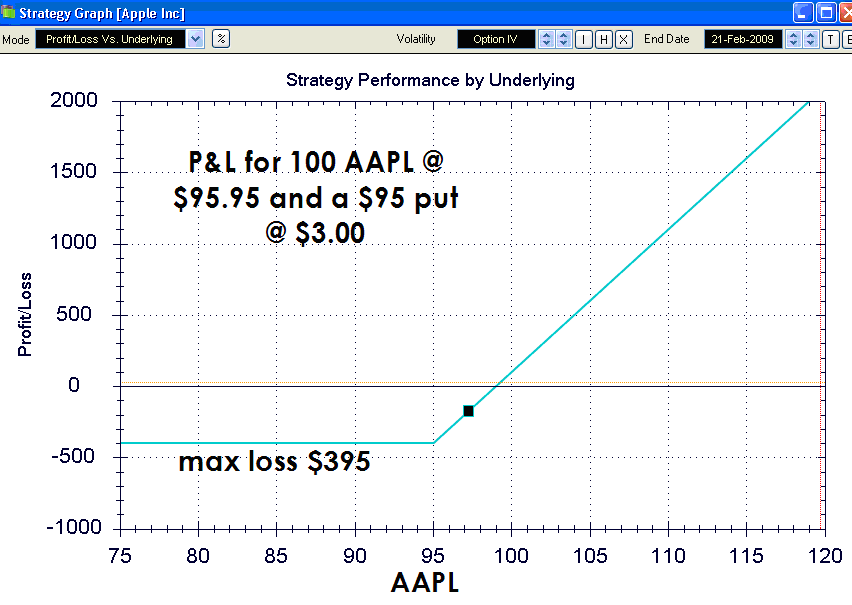Trailing Stops Protective Puts Help Protect Against Market Losses
Post on: 16 Июнь, 2015 No Comment

Trailing Stops, Protective Puts Help Protect Against Market Losses
Don’t give back your hard-earned market gains! Managing the risk of loss is imperative for any savvy investor. Many investors use trailing stop-loss techniques as a risk-management tool. Other investors employ protective put options to insure against a sudden drop in the price of your stock. How does an investor decide which risk-management strategy to use?
It is helpful to understand the characteristics of each approach. Investopedia.com has a thorough treatment of the subject on its website. WEALTH has excerpted from that here:
A trailing stop adjusts the stop price at a fixed percent or number of points below the market price of a stock. The purpose of the stop is to protect against a move by the stock price in the opposite direction than what you expect. When the price of your stock rises, the trailing stop rises with it, helping to protect you against a larger loss and eventually capturing a portion of your profit. With a trailing stop, you continue to hold the stock so you still receive the dividends from the stock, if they are paid. Should the stock plunge past your stop, your shares are sold at the next available price, not necessarily the stop price, assuming you have not placed the stop order with a limit price. (For more on trailing stops, take a look at Trailing-Stop Techniques .)
Protective puts offer a different way to insure against a loss in a stock price. Like buying insurance, the purchase of protective puts increases the total cost of the price of the stock by the premium you pay to buy the put.
However, protective puts may give the investor more control over when to close the position. You may sell the put at any time before it expires. Should the stock fall, you may collect a gain from the sale of the put, or the gain from the put will offset the loss from the stock price falling. You could also allow the exercise of the put at expiration by selling your shares at the puts strike price. The protective put covers losses below the strike price of the put, so you always know the lowest exit price.
Pros and Cons of Trailing Stops
With a stop, you are protected against a loss greater than where you place the stop price. In addition, there is no cost to enter your stop order. You only pay a commission and fees if the stop is hit and the stock is sold. The stop price climbs with the rising price of the shares. You do not have to enter another order and a stop loss does not have an expiration date .
On the down side, a trailing stop placed too close to the current price may cause you to close the position prematurely. More seriously, the price of the stock could fall precipitously overnight, opening well below your stop price. In this case, the price you will receive on a sale is well below your stop price. In sum, identifying the right place to set your stop can be difficult.
Pros and Cons of Protective Put Options

Protective put options have their own pros and cons. With a protective put, if the share price falls to zero, you will gain on the difference between the put strike price and the share price. This gain will offset the loss you incurred for holding the underlying stock. Protective puts allow you to hold onto your stock while insuring against losses. If the stock price drops, you can hold the put until you decide to either sell the put for a profit or exercise the sale of the shares. If you believe in the company and the stock price drops below the strike price of the put, you can sell the put and use the profits to buy more shares of the stock at a lower price.
Investopedia offers this instructive web video on the basics of using put options.
The downside is that you must pay a premium to buy the put, adding to the cost of owning the stock and raising your break-even level. The expiration date of the put option forces you to make a decision to either sell the put or exercise the option before it expires.
Mark Andrews is the Editorial Director of WEALTH magazine.
This entry was posted on Wednesday, March 16th, 2011 at 7:48 pm and is filed under INVESTING. You can follow any responses to this entry through the RSS 2.0 feed. You can leave a response. or trackback from your own site.














